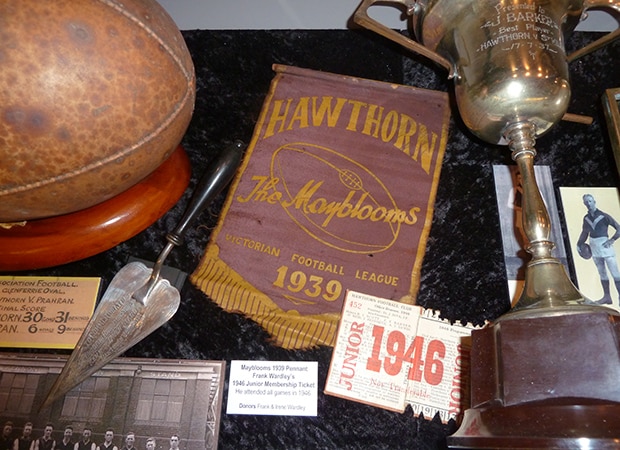Since 1992, when the task of establishing a Club Collection of memorabilia commenced, it has been an on-going puzzle why no historical items with the word ‘Mayblooms’ had been found. The only visual reference to the term ‘Mayblooms’ had been found in newspaper reports from 1927 onwards. No badges, medallions, pennants, or club signage had been discovered.
The only evidence of such memorabilia came when the Club put out a call, via Hawk Talk in 1988, seeking memorabilia that could be photographed for possible inclusion in a forthcoming publication on Club history. One supporter brought in a brown and gold pennant with the wording, ‘The Mayblooms’. The historical committee was taken by surprise with this generous offer. The resulting photograph of the pennant is depicted on page 42 of the Club’s history, The Hard Way, published in 1990.
It would take another 27 years before a similar Mayblooms pennant would emerge. It was a pleasant shock to the system when fellow staff member, Jackson Field, mentioned that his good friend, Kara Richardson’s grandfather, Frank Wardley had some old Hawthorn pennants. Amongst his collection, he had one from when he was a young boy supporting Hawthorn. It had the word ‘Mayblooms’ on it and he wondered whether the Hawks Museum might like to see it.
Unfortunately, Frank, who was up in years and not in the best of health, passed away before he could visit the Hawks Museum with his pennants. However, the Hawks Museum is delighted to announce that through the wonderful generosity of his wife, Irene Wardley, Frank’s Mayblooms Pennant is now on display in the Hawks Museum, along with his 1946 Junior Membership ticket, as a tribute to the many years he supported Hawthorn.

The known Origins of the word ‘Mayblooms’
In 1943, Hawthorn was given a new nickname - the ‘Hawks’. This new moniker has since has become the much-loved mascot of the ‘Mighty Fighting Hawks’, replacing the more sedate term, the ‘Mayblooms’.
The origins of the term ‘Mayblooms’ is shrouded in mystery. It has been thought to be associated with Hawthorn in a local, almost family sense from its early VFA days, after its colours, brown and gold were adopted.
Former Club President, Geoff Lord recalled that his grandmother, who had a florist shop in Glenferrie Road, told him that early in the VFA era, prior to WW1, she would make up sprigs of the Hawthorn flowers that she and her friends would wear pinned to their coat collars to show their support for Hawthorn when they attended games at Glenferrie.
Harry Gordon in The Hard Way tells us that the explanation was simple enough; the Hawthorn bush was also known as the May bush or May tree, and both its flowers and the plant itself were referred to, first in England and later in Australia, as ‘Mayblooms’. The Club’s brown and gold guernsey reinforced the link; in hedges growing around Hawthorn and other parts of Melbourne. The Hawthorn plant was in full bloom at the start of winter, when it was covered in the gold of the yellowing fruit and the brown of the bronzed foliage. It did not take local fans long to observe and joke amongst themselves that the footballing ‘Mayblooms’ tended to also bloom in May, at the start of the football season and fade as the season progressed.
To add to the puzzle, the term ‘Mayblooms’ did not appear in match reports in the newspapers of the day till 1927. By the mid 1930’s the word ‘Mayblooms’ featured proximately in the press but adding to the intrigue, it was a name that the Club virtually did not acknowledge in its own publications.
In the mid-1980s, when the Hawks Museum was interviewing former players, Albert Hyde (1925-35), Dick Logan (1926-30), Leo Murphy (1930-40) and Stan Spinks (1931-41) they were asked about the term ‘Mayblooms’. They expressed a view that they recalled the term ‘Mayblooms’ as a name given to the 2nd 18 players who may improve sufficiently to gain selection for the senior side as the season progressed.
The Hawks Museum would like to hear from anyone who has any memorabilia with the wording, ‘Mayblooms’ or ‘Mustard Pots’, a nickname of the Club from 1933 when the Club’s Guernsey colours were reversed, to a gold Guernsey with a brown ‘V’.


